Come to Gusu City temporarily on May Day, and the mountains and rivers will be intoxicating again
The COVID-19 epidemic has been raging for half a year, causing heavy losses around the world. China took the lead in controlling it and pressed the restart button. The economy and society recovered rapidly. It is the May Day holiday. I went to Suzhou to have a visit and take practical actions to support the resumption of work and production.
Suzhou is an ancient city with a history of more than 2500 years. It has been prosperous since ancient times and has prosperous culture. It has produced more than 50 top scholars, including countless literati and celebrities such as Sun Wu, Bai Juyi, Fan Zhongyan, and Tang Bohu. There are also "small bridges and flowing water, pink walls and black tiles, and historic sites and famous gardens". The unique style makes people miss it.
When I came to Suzhou this time, I stayed at Nanyuan Hotel. The hotel is located in Laocheng District, with convenient transportation and close to various scenic spots. There are many time-honored restaurants and some new online celebrity shops nearby, so you can not worry about eating and drinking. Nanyuan Hotel itself has a story. It was once Chiang Kai-shek's villa in Suzhou, and Jiang Weiguo lived here. The garden is exquisite and elegant, with towering ancient trees. You can appreciate the artistic conception of Suzhou Garden without leaving home.
It's a holiday, and the schedule is not so stressful. You can make it feel as comfortable as you are. Sleep until you wake up naturally, go out to taste Su-style noodles and Shengjian buns, go around the garden, come back to take a nap, go out for a stroll, check in Subian dishes at night. The daily rhythm is to sleep, stroll around, eat and drink. It's really drunk. The mountains and rivers are intoxicating again.
the first day
Fly to Shanghai Hongqiao Airport today, exit Terminal T2, walk 10 minutes to the high-speed rail station, take the high-speed rail, and reach Suzhou in 25 minutes.
It was already past 9 o'clock in the evening when I checked in, and most of the restaurants were closed. It was hard to find one called "Gusu Family Banquet", I couldn't wait to taste Su Ban dishes, but the dishes were well served and tasted average, especially the squirrel fish, which was warm and not crispy. It was probably fried and placed there first, poured in some juice and carried out.



the next day
Breakfast:
Wantaixing Su-style noodle shop.Unexpectedly, Suzhou could make a bowl of noodles so rich and exquisite. I ordered bald butter noodles and cabbage yellow croaker noodles, and ate a bowl full of crab roe mixed with noodles. It was so fresh that one could bite his tongue. The only drawback was that it was a little expensive.



After breakfast, go to see the garden
1. Internet Master Park
The Master of Nets Garden was first built 800 years ago during the Southern Song Dynasty. Over the past few hundred years, hands have changed many times, and construction has failed, and construction has failed again. Jiangsu magistrate Li Hongyi and warlord Zhang Zuolin were both the owners of the garden. Master Zhang Daqian once lived here and raised a tiger in the garden.




The last owner of the garden was He Yanong, the father-in-law of the famous physicist Qian Sanqiang. After liberation, descendants of He donated the Garden of Nets to the country.


The Master of Nets Garden is not large, covering an area of eight acres, but has the intention of endless recovery. The layout is compact and small. The spring hall in the garden was copied and moved to the United States by the Metropolitan Museum of New York.




2. Canglang Pavilion
Canglang Pavilion was built during the Northern Song Dynasty. It was once the residence of Han Shizhong, a famous anti-Jin general. It is the oldest garden in Suzhou, with an ancient atmosphere in its mottled mottled patterns.


Su Shunqin, a famous poet in the Song Dynasty, spent 40,000 strings to build a Canglang Pavilion by the water, thinking that "the water of the Canglang is clear, it can wash my tassel; the water of the Canglang is turbid, it can wash my feet." Ouyang Xiu wrote "Canglang Pavilion"-"The clear wind and bright moon are priceless, but unfortunately they only sell for 40,000 yuan." This is the only sentence that the world knows Canglang Pavilion.
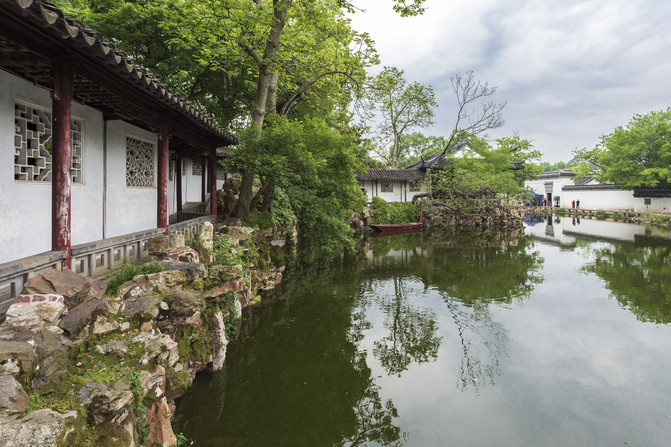


The complex corridor of Canglang Pavilion is not only regarded as a major feature of Canglang Pavilion's landscaping, but also known as one of the three famous corridors of Suzhou's classical gardens. There are 108 leaking windows in the corridor, all of which have different shapes and no one is identical.


3. Keyuan
Keyuan was built during the Five Dynasties and Ten Kingdoms period, more than 500 years earlier than Humble Administrator's Garden. It was once part of Canglang Pavilion.



The garden is not large in area. The most popular thing is the lake water decorated with weeping willows and lotus flowers. It is called the "Yiqing Pond". The pavilions and halls are built around the lake. Sitting in it, the breeze blows, makes it very comfortable.



Dinner is chosen atOld Suzhou Tea Restaurant.Su Bang cuisine is Suzhou's local cuisine, characterized by fresh, sweet and delicious, and thick oil red sauce. I ordered hand-peeled river shrimps, crispy fish, etc. The taste is good. You can come here again.



the third day
Today, we will focus on visiting Humble Administrator's Garden. In order to avoid crowds of people, we are scheduled to enter the Garden at 8 a.m.
1. Humble Administrator's Garden
More than 500 years ago, a middle-aged man frustrated in officialdom resigned and returned to his hometown of Suzhou, which kicked off the legend of Humble Administrator's Garden. This man was called Wang Xianchen. The designer of the garden is Wen Zhengming, one of the four great talents in Jiangnan. "Poor politics" means that you are a "poor person" who regards watering the garden and growing vegetables as your "political" matter and expresses your attitude of retiring.



Over the past 500 years, more than 30 garden owners have changed. Wu Sangui, Li Hongzhang, and Zhong Wang Li Xiu have been involved in Chengdu. Cao Xueqin's grandfather, Cao Yin, worked as a Suzhou Weaver and purchased the Humble Administrator's Garden. Cao Xueqin was born here. I wonder whether the prototype of the Grand View Garden in the Dream of Red Mansions is the Humble Administrator's Garden.


Time has changed, and it has been receded. Fortunately, it has survived to this day. Although today's garden is far smaller than its scale at that time, it is still the largest existing garden in Suzhou and the first of the four famous gardens in China.


There is a curved corridor in front of Tingyuxuan, which is divided into inner and outer sides. On the outside of the corridor wall is a man's passage. The road is tortuous, and the floor tiles are paved in prismatic shapes, indicating that there are edges and corners.

The inner side is used by women, the road is straight, and the floor tiles are paved in a square, which means that they should be square and orderly.

Jiashiting, using the section of the southern boundary wall as the background, green bamboos were planted in front of the wall and pine skin stalagmites were lit. An empty window was opened on the wall on the south wall of the pavilion, just to frame the green bamboo and beautiful stone behind it.


Linglong Hall, There is a horizontal plaque of "Jade Pot Ice" hanging in the center of the museum. The name of the plaque is taken from Bao Zhao's poem of the Southern Dynasties,"As Clear as Jade Pot Ice", and hangs on both sides are couplets written by Zhang Zhiwan, who presided over the restoration of the ancient garden: "The winding water cherishes the mountains, and the elegant collection exceeds the lion forest and the tiger fu; the flowers grow bamboo, and the romance follows the literature and painting Wu poems."

Haitang Chunwu,A unique book-like brick forehead is embedded in the south wall of the courtyard. Two crabapple trees in the courtyard.

Taking advantage of the Beisi Tower,From the East Garden to the Hongyi Pavilion in the Central Garden, you will see an exquisite pagoda not far away. This pagoda seems to be in the garden, but in fact, the Beisi Pagoda in Baoen Temple a few kilometers away from the garden is cleverly borrowed from the exterior.


Yuanxiang Hall,It is a four-sided hall built facing water. In summer, lotus leaves are in the pool and fields. The fragrance of lotus flowers is sent far away. It is a good place to enjoy the lotus.

Wuzhu Youju, backed by the promenade and facing Guangchi, there is a couplet on it "Take advantage of the breeze and the moon, watch the flowing water and watch the mountains"

Xiao Feihong, and the only covered bridge in the park in Suzhou Garden

Liuting Pavilion,It is a good place to enjoy the lotus and listen to the rain. The name of the pavilion comes from the sentence of Li Shangyin in the Tang Dynasty,"The autumn shade does not disperse and the frost flies late, leaving behind residual lotus leaves to listen to the sound of the rain." In front of Liuting Pavilion is a Qing Dynasty ginkgo wood carving, which softens the two patterns of "Three Friends of Cold Year" and "Magpie Climbing Plum". It is the treasure of Humble Administrator's Garden.

36 Yuanyang Restaurant, named after thirty-six pairs of mandarin ducks were raised in the pond. It is a place to listen to the opera. The roof is arched to enhance the sound effect and make the lingering sound around the beam.

Who will you sit with? Also known as Fan Pavilion,"Sitting on the Hu bed leisurely, there are thousands of flowers on the peak outside Yu Gong Building. Who are you sitting with? The bright moon and the breeze I... "。This fan pavilion has no roof, but there is also a Li Pavilion next to this pavilion. As you change the scenery, the Li Pavilion becomes the top of the fan pavilion.
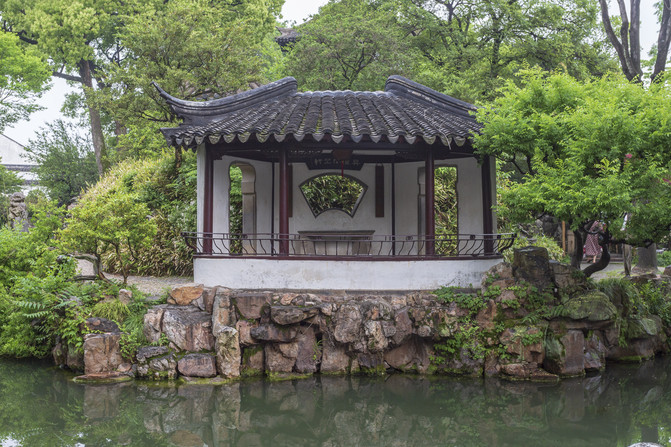

Xiangzhou,It is a "boat" type structure, with platforms, pavilions, pavilions, buildings and corridors from the bow to the stern.

Seeing the mountain building,The bottom floor is called the "Lotus Root Fragrance Pavilion". When resting, you can lean on to see fish and lotus flowers in the middle. The upper floor is the Jianshan Building, which is taken from Tao Yuanming's famous sentence: "Pick chrysanthemums under the east fence, and you can leisurely see Nanshan Mountain." , you can enjoy the beautiful scenery of Zhongyuan from upstairs. It is said that the windows are inlaid with shells.
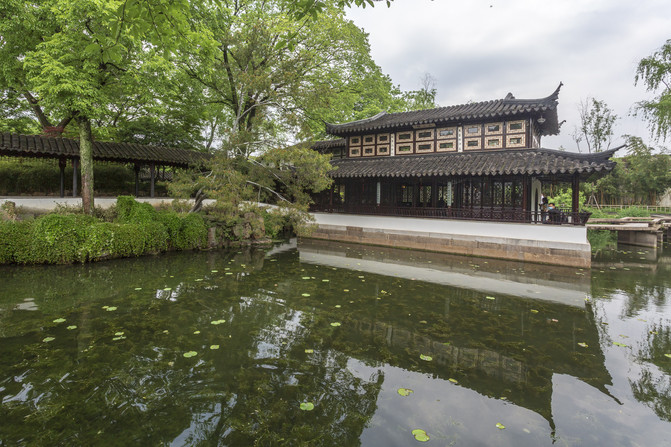

Wave corridor,On the calm and quiet water, using a curved bridge close to the water gives people the feeling of rippling blue waves. Walking on it is like taking micro steps on the waves.

Tower Ying Pavilion,The location is inconspicuous and has reached the end of the garden. It is vaguely deep and evocative.

2. Lion Forest
The Lion Forest was built in the Yuan Dynasty and has been more than 600 years since then. It is named because of the "bamboo forest in the forest and strange rocks under the bamboo, which look like lions." The last owner of the garden was Shanghai pigment giant Bei Runsheng. He was the great-uncle of architect Pei Yuming. After liberation, descendants of Bei donated the garden to the country.


Kangxi and Qianlong both visited the Lion Forest and awarded them equal plaques of "Zhenqu".

Lion Forest is famous for its rockery. The mountain is divided into three layers: upper, middle and lower. There are twenty-one caves and nine winding paths.



3. Suzhou Museum
Suzhou Museum was established in 1960 and was redesigned by Master I.M. Pei in 1999. I.M. Pei has countless connections with Suzhou, and Lion Grove is Pei's family property. The master used extremely simple lines and a pool of pool water to outline the cornices and the distant mountains of Suzhou gardens, which is amazing. Unfortunately, due to the epidemic, the indoor part was not open, and we couldn't see the magic of the master painting with light.


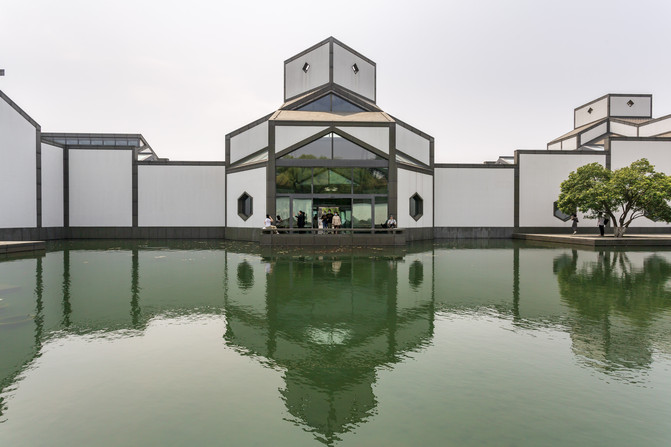
lunch
ginger pot sticker, order fried dumplings and serve them with oily tofu and vermicelli soup. The taste is okay.


After taking a nap, go out for a stroll.
4. Pingjiang Road
The most unforgettable thing about Suzhou City is Shuixiang. Pingjiang Road is built along the river, retaining the water town pattern of "waterways parallel and river streets adjacent." There is an elderly house along the river with white walls and blue tiles, wooden grids and flowered windows, mottled exterior walls, and swaying vines. There is a vivid description in the Tang poem that "You come to Suzhou to see me, and people rest on the river."



The quiet river and the houses, pavilions, small bridges, flowers and trees with white walls and black tiles borrow from each other's scenery. The narrow part of the river can be held on both sides of the river, and the wide part is just across the water.




The shops standing on the street are quietly hidden under wooden door panels. At first glance, they look no different from ordinary residential buildings. Only the particularly exquisite porch can you see some clues.


Pingjiang Road at night is another scene. Looking blankly at the quiet river water, the faint sound of Pingtan and Dongdong sounds can be heard in my ears. I wonder which pair of talented and beautiful women are singing the feud.

dinner
On Pingjiang RoadBanyuan Private Cuisine, this restaurant does not order a la carte and is arranged by the boss to eat whatever you want. Its characteristics are: small quantity of dishes, more variety, more than 10 dishes, exquisite cooking, good environment, and even 1-2 people can eat all the Su Bang dishes.





the fourth day
1. Tongli Ancient Town
Tongli Town is 20 kilometers away from the Urban area and 40 minutes by car. It is a typical Jiangnan water town. Every family is close to water, every household is connected by boats, and the land is connected by bridges, forming a pattern of small bridges, flowing water and people.
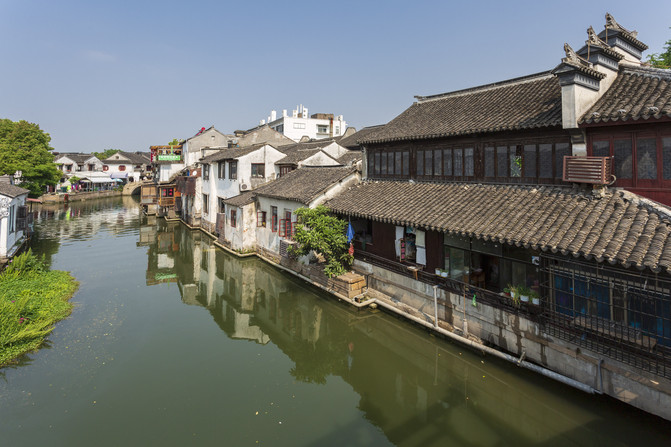




Tuisi Garden,Located in Tongli Town, it was built in the Qing Dynasty by an impeached official who returned to his hometown. The name of the park means "loyal to one's efforts and repenting to make up for one's mistakes." was included in the world Cultural Heritage
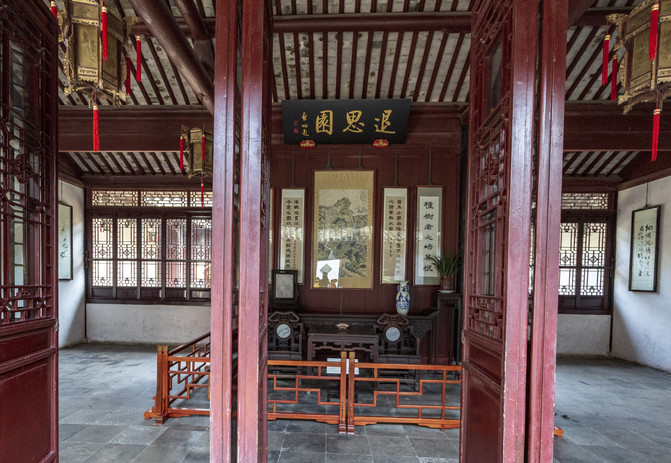




lunch
Dumb fried pan,This is a very famous restaurant in Suzhou. Pan-fried buns are served with beef vermicelli soup and a bowl of bubble chaos. Pan-fried buns have thin skin and large filling, rich soup but not greasy, and delicious. Bubbles have thin skin and shape like bubbles, but they are basically skin.



I ran a long way today and it was a little hard. I would sleep in the afternoon.
dinner
also went toLao Suzhou Tea Restaurant, I ordered squirrel fish, field snail stuffed meat, salt water goose, etc. It was light and refreshing. I like it.




the fourth day
1. Lingering in the garden
Whether it is Suzhou's "Four Famous Gardens", China's "Four Famous Gardens", or the list of world cultural heritage "Suzhou Classical Gardens", the Lingering Garden is all on the list. Lingering Garden is one of the representatives of Suzhou's classical gardens. Among the four famous gardens in Suzhou, the Lingering Garden is a representative of the Qing Dynasty gardens.

In the small courtyard, there is a flower bed surrounded by Taihu Lake stones against the powder wall. There is a golden osmanthus tree and a magnolia tree on the flower bed. This is a favorite design among wealthy people in Suzhou, symbolizing "a full house of gold and jade".

There is an empty window on the wall on one side of the corridor. The empty windows not only improve the lighting in the corridor, but the window frames also combine with the green trees in the patio behind the windows to form a beautiful picture.

GumujiaokeThere are one cypress tree and one Yunnan Camellia planted in the flower platform. There are only two trees, one stand and one plaque. The whole space looks clean and tidy, which means that the couple will be married and have a good relationship for a hundred years.

Huabu Xiaozhu, there is a seal script stone forehead on the powder wall. This area is called Huabuli because there is a nearby dock for loading and unloading flowers and trees on the Shantang River. In ancient times,"bu" means "bu", so it is called Huabuli. This is the origin of the name "Xiaozhu".

Green Shadow Pavilion,It's a bright pavilion near the water. A row of beautiful women replaced the north wall. Enjoy the scenery here without worrying about cold and heat, rain, snow, or the scorching sun.
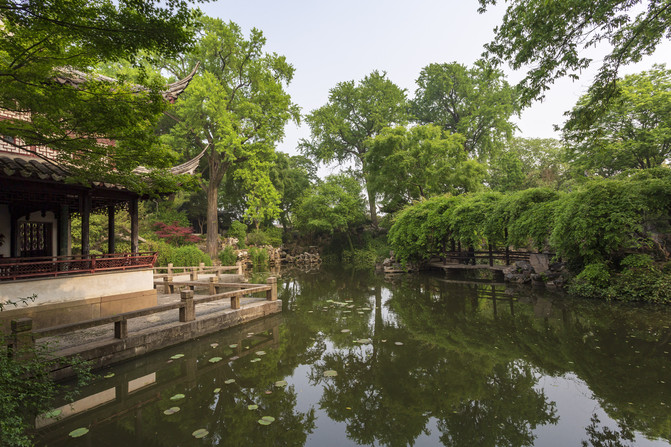
left isMingselou, on the rightHanbishanfang, the two buildings are gathered into a picture-style building. The Mingse Tower on the second floor is the front cabin, and the slightly lower Hanbi Mountain Room is like the middle cabin, achieving organic unity. It is really a wonderful construction.


There is one in the Lingering Garden."little Penglai”。It is a small island in the middle pool, with a curved bridge on the side. A wisteria flower stand was erected.

Quxi Tower,It was a building in name, but in fact it was just a two-story and half-building. Downstairs is a corridor, and upstairs is a row of exquisite long windows and hexagonal leaky windows on both sides.

Wufeng Fairy Hall,It is the main building. In the courtyard, the mountains are piled with stones and mountains based on the charm of the Wulao Peak of Lushan Mountain. The mountain road is winding and the peaks turn in circles. The "Hall Mountain" here is recognized as the largest among the "Hall Mountain" in Suzhou's classical gardens.


only way, showing the garden owner's mentality of being out of the dust and practicing meditation.

crown Cloud Peak, the treasure of the Linguan Garden, with a peak height of 6.5 meters, perfectly reflecting the "thin, wrinkled, leaking and transparent" characteristics of Taihu Lake Stone. The solemn and solid texture of Taihu Lake stone, the light and flexible posture, the strong outside and soft inside, and the harmony of yin and yang are in line with the aesthetic concepts of ancient Chinese literati.
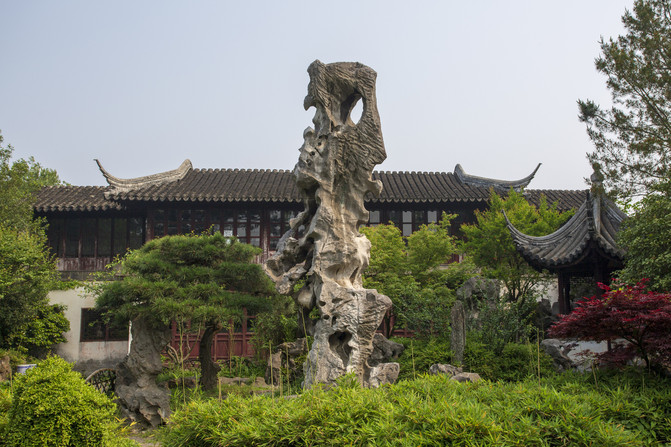
This set of rockery is similar to the courtyard of the Suzhou Museum. I wonder if Master Pei Ium-ming borrowed from this landscape in the Lingering Garden?

Because of the epidemic, no tour guide was invited, and many beautiful landscapes in the park were unclear.




2. Yuyuan.
Qiyuan is a small minority in Suzhou gardens. The garden is small and has a small reputation. It was built on the basis of an abandoned garden by a retired official in the Qing Dynasty.




A good couple lived in the garden, and the city built a poem city."Couples" and "couples" communicated with "couples". Retired officials fell ill, lost their wives and children, built a garden and returned to seclusion. They met a talented girl from Jiangsu and Zhejiang who was 15 years younger than him. The two fell in love and got married and enjoyed it.



The most famous Huangshi rockery in the park is majestic, simple and simple, and belongs to the top of Suzhou garden rockery.

lunch
Yuxingji Noodle Restaurant,I ordered three shrimp noodles and fried fish noodles, but it was still very delicious.


Continue shopping in the afternoon.
3. Jinji Lake.
When talking about Suzhou, most people think of gardens. In fact, Suzhou also has high-rise buildings and high-tech industries. Its GDP is second only to Beijing, Guangzhou and Shenzhen, and higher than surrounding Hangzhou and Nanjing, the provincial capital. Jinji Lake is located in Suzhou Industrial Park and has a completely different temperament from the Laocheng District.



The Oriental Gate has become a new landmark in Suzhou


dinner
is stillOld Suzhou Tea Restaurant,Today, I ate fish, pickled fresh food, and broad beans with scallion oil, and the taste is still great.



the fifth day
It's time to return today, goWantaixing Su-style Noodle RestaurantI ate another bowl of bald butter noodles and scallion noodles, took the high-speed train to Shanghai, and flew home.
concluding remarks
Private gardens appeared in the ancient city of Suzhou as early as the Spring and Autumn Period. By the end of the Qing Dynasty, there were more than 800 gardens, and more than 70 still exist. The mentality of seclusion was the reason for the achievement of these classical gardens. The migration of aristocratic families south, the retreat of officials, and the closure of giants led to the birth of many private gardens. The poetic life of gardening not only has the ideal of survival of "harmony between man and man", but also the spiritual demands of urban people to transcend customs and love mountains and rivers. In those winding paths, small bridges and flowing water, arches and flower windows, plum orchids, bamboo chrysanthemums, almost all the elegance of Jiangnan is hidden.
When you come to Suzhou to see the gardens, you must not only see the pavilions, winding trails, dark fragrance and sparse shadows, quiet bamboo and wood, and changing the scenery; you must also see the gardener's exquisite ideas, elegant aesthetics, and long charm; you must also see the changes of the garden, the vastness of the years and the vicissitudes of the sea.
This time I was just skimming the surface and skimming the water, and I will come again when I have the opportunity.
